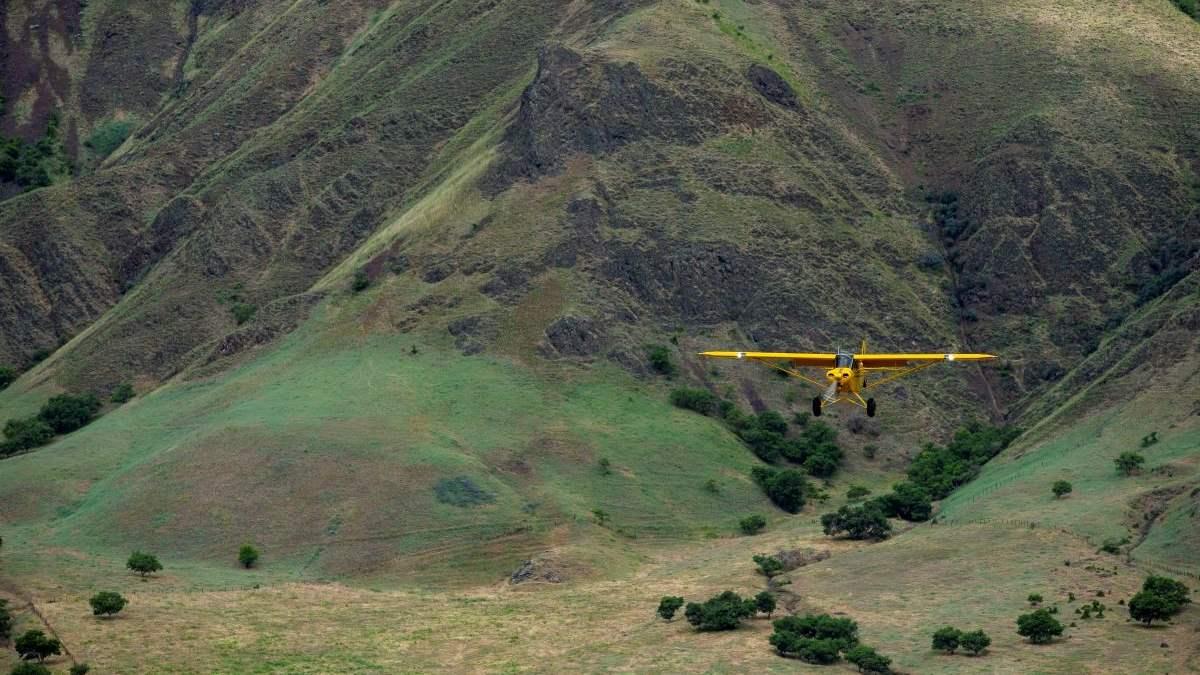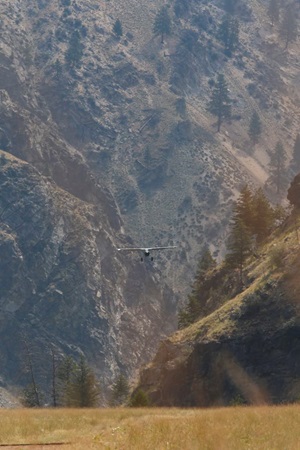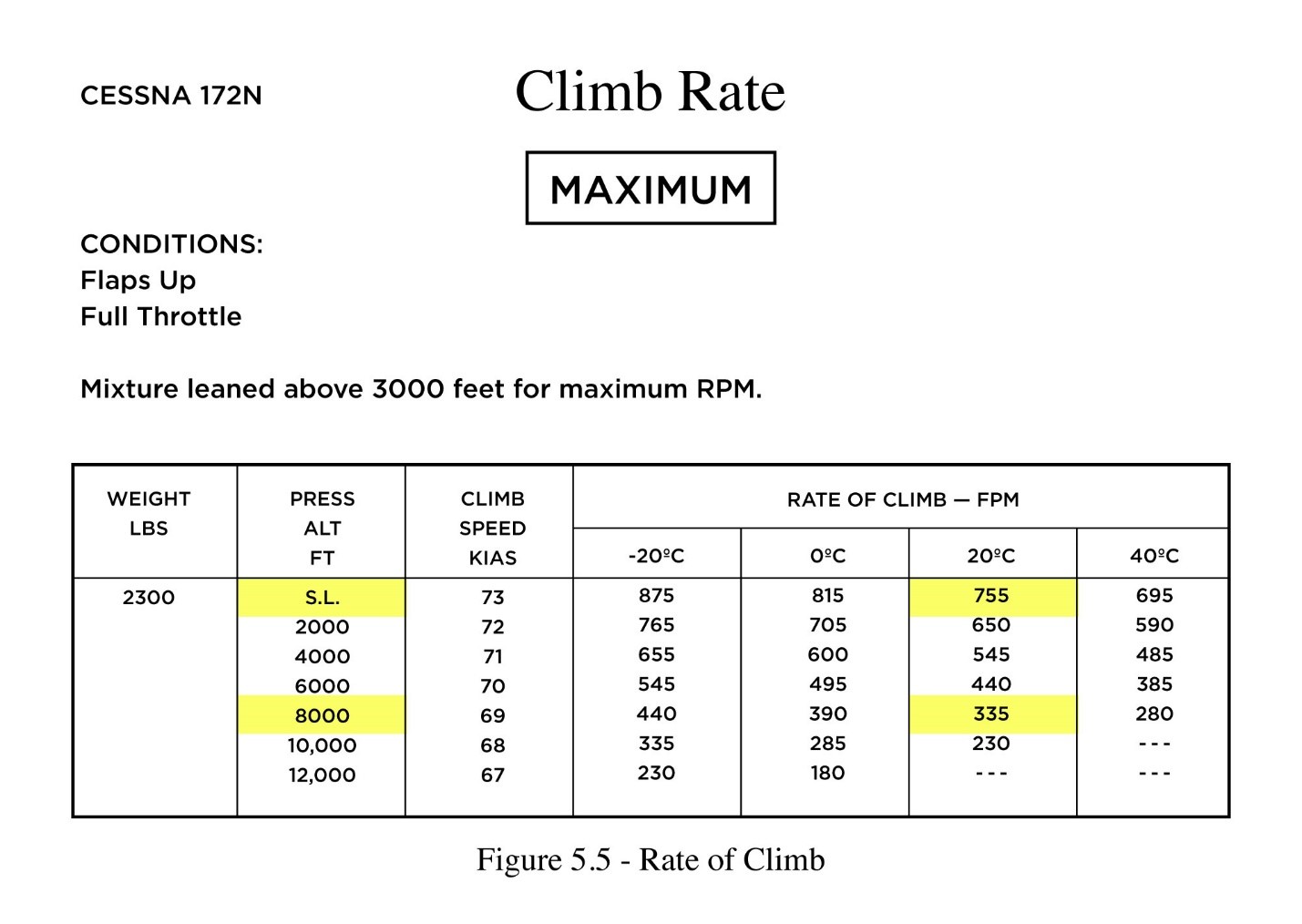Mountain Performance
Safety Spotlight: Mountain Flying

Risk is heightened in mountain flying because there is a smaller margin for error. You’ll need to closely review aircraft performance before attempting flight at the high density altitudes and elevations of challenging backcountry and wilderness airstrips.
Density Altitude
“Density altitude is pressure altitude corrected for nonstandard temperature.” Any certificated pilot can spit that rote line out, but what does it actually mean? Density altitude is the altitude at which the airplane “feels” like it’s flying. Higher temperatures and elevations equal higher density altitudes.
Density altitude directly affects an aircraft’s performance. A wing’s lift depends on the mass of air molecules it displaces every second. At higher density altitudes, the air is less dense and there are fewer air molecules available to provide the needed lift. A propeller’s or a jet’s thrust also depends on the mass of air molecules it can hurl backward, and similarly, the engine’s power output depends on the amount of air available for combustion. All of these performance characteristics can be drastically affected by a high density altitude.
Keep in mind that at a higher density altitude your airplane will also have a higher true airspeed. This not only means you’ll fly faster approaches despite the same indicated airspeed but you’ll also have a wider turning radius. This can be a minor issue, or it can be the difference between a successful canyon turn and an accident. Make sure you know and understand how your aircraft performs in changing density altitudes before you head into the backcountry.
Tip: Click on the Density Altitude tab to review density altitude calculation tools and links to a density altitude poster. You can order a version large enough to prominently display at your airport, flying club, flight school, FBO, and backcountry strip or download a smaller version. Both can be modified for use at your location.
Density Altitude
What causes density altitude and how does it affect my airplane? Find the answer to these questions and learn a quick and easy step to ensuring maximum aircraft performance when density altitude is a factor in your area.
Weight Considerations
Operating at maximum gross weight may not be an option in the mountains. If it isn’t practical to take fewer passengers or less cargo, consider reducing your fuel load—even if it means making an extra fuel stop en route.
Leaning
At high density altitudes, normally aspirated engines may need to be leaned for takeoff, and then leaned again during climb and cruise. If the destination airport is also at a high altitude, enrich the mixture somewhat from cruise altitude during descent but do not go to full rich. Refer to the POH for guidance or ask a mountain flying instructor. If a go-around becomes necessary, the mixture and other engine settings should be set to provide maximum available power without being over-rich. Experienced mountain pilots often land carbureted airplanes with the carb heat off in order to have more available engine power in the event of a go around or aborted approach.

True Airspeed
True airspeed increases with altitude, but you’ll fly the same indicated airspeeds as you would at sea level. Pilots making their first high-altitude takeoff or landing are surprised to see how fast the ground is whizzing by, even though they are correctly using the same indicated airspeed as at sea level.
Gravel, Grass, and Dirt Landing Strips
Mountain airports can offer challenges above mere aircraft limitations. They are rarely built to FAA terrain clearance standards, often have no services like maintenance or fuel, and you might not even get a cell signal. It’ll often be up to you as the pilot to determine the conditions of the field, and whether or not they are safe for landing, from the air. If anything goes wrong, you’re likely to be on your own, at least for a little while. Before you stop the prop after landing, consider what you’d do if you had any trouble restarting your engine. Be sure to receive flight training at “unimproved” airstrips before attempting to land at one.
Whenever you fly, you should protect your propeller from debris. In the backcountry, where airfields are rarely smooth and free of hazards, this is extra critical. Taxi slowly and patiently, and be mindful of your controls—depending on the wind, full aft elevator is a good practice. If possible, walk your taxi route before testing it with your airplane. An errant animal burrow, hidden rock or tree stump can ruin your day, leaving you stranded in the backcountry with an unairworthy airplane in need of an engine overhaul.
It’ll often be up to you as the pilot to determine the conditions of the field, and whether or not they are safe for landing, from the air.
 Runway Gradient and One-Way Fields
Runway Gradient and One-Way Fields
Use runway slope to your advantage. Taking off downhill decreases the required takeoff distance, and landing uphill reduces landing roll. Some runways are limited to one-way operations due to slope, surrounding terrain, or a combination of the two. At these fields, go arounds are often impossible beyond a certain point-in-space called the abort point. At these one-way strips, you need to make a stabilized approach every time, and mentally prepare to get the airplane on the ground no matter what once you pass the “point of no return.”
Sloping runways are common in mountainous areas. One example is Sedona, Arizona. This popular tourist destination offers a well-maintained airport and breathtaking scenery, but the Chart Supplement points out that Sedona’s 5,132-foot runway has a 1.8 percent slope. That may not sound like much, but do the math. This runway slopes more than 92 feet from one end to the other! By comparison, most control towers are only about 75 feet tall. Any slope can significantly change takeoff and landing distances—be sure to carefully research your destination to avoid surprises.
Diminishing Climb Performance
At high density altitudes, many normally-aspirated engines can only provide enough power for a 200 or 300 foot-per-minute climb…and a mountain downdraft can easily reduce that to zero or even turn it into a descent. Don’t expect climb performance you’re used to at sea level when flying in the mountains.

Climb Gradient
Unlike rate of climb, which is measured in feet per minute, climb gradient is measured in feet per nautical mile and is a function of rate of climb and ground speed. The faster an aircraft’s groundspeed, the greater the rate of climb needed to avoid obstacles.
Calculating Climb Performance
At high density altitudes, it can take much more time and distance to reach your planned altitude. Calculating after-takeoff climb performance before the flight will help curb unrealistic expectations about climb performance.
Terrain Avoidance
Avoiding terrain or obstructions after takeoff often requires following certain procedures, which may be listed in the Chart Supplement and/or posted near the takeoff end of the runway. At IFR airports, the obstacle departure procedures (ODPs) in approach chart publications can also give you an idea of what to expect.